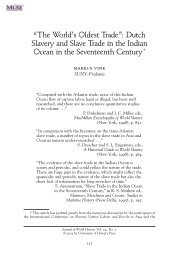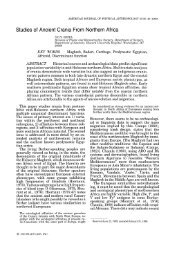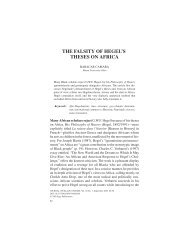GENETICS, EGYPT, AND HISTORY: INTERPRETING ...
GENETICS, EGYPT, AND HISTORY: INTERPRETING ...
GENETICS, EGYPT, AND HISTORY: INTERPRETING ...
Create successful ePaper yourself
Turn your PDF publications into a flip-book with our unique Google optimized e-Paper software.
230 S.O.Y. Keita and A. J. Boyce<br />
tionary (versus racio-typological) perspective, and indicates the richness<br />
and complexity of indigenous African biocultural microevolution and its<br />
diversity (Hiernaux 1974, Keita and Kittles 1997, Kittles and Keita<br />
1999). Conceptual racio-typological approaches that only interpret variation<br />
in terms of the interaction of primordial pre-existing distinct biocultural<br />
units will not easily explain phenomena like the PN2 distribution.<br />
Accepting even the lower putative age of the mutation (Hammer and<br />
Zegura 2002 vs. Bosch et al. 2001), and language phyla (Ehret 1984), it<br />
can be suggested that PN2 and descendants perhaps arose in a population<br />
that antedates these language groupings, and which later heavily contributed<br />
to, or became the biopopulation base of, the nascent speech communities.<br />
Alternatively, it could mean that there was extensive interaction<br />
between the speakers of the ancestral linguistic families, postulating that<br />
the descendant mutations arose in these, with a subsequent different distribution<br />
in populations of various speech families. Haplotypes V and XI<br />
are somewhat ubiquitous in African language families (see Poloni 1997).<br />
In either case it is likely that a very successful subsistence strategy in the<br />
northeast quadrant of Africa made this possible (see e.g., Connor and<br />
Marks 1986, Wetterstrom 1993).<br />
As noted, VII and VIII are the major indigenous Near Eastern haplotypes,<br />
and found to predominate in extant core descendant communities:<br />
Near Eastern Arabic speakers and Jews. In comparison to those of V their<br />
frequencies are small in supra-Saharan Africa (Tables 2A, 2B). Again<br />
employing the Falasha and northern Africa cases as a models, and the<br />
genetic evidence, it can be postulated that selected M35 carriers, speakers<br />
(from Africa) of a stage of ancestral Semitic (pre-proto-Semitic) entered<br />
the Near East, where indigenous peoples adopted it, and via ongoing language<br />
shift and population growth eventually became numerically greater<br />
than the original speakers of the ancestor.<br />
As noted with reservation, the archeological “signal” for such movement<br />
might be the presence of the Mushabi industry in the Levant that<br />
has Nile Valley affinities (Bar-Yosef 1987, Midant-Reynes 2000). The<br />
large number of Mushabi sites suggests a major migration (see comments<br />
in Bar-Yosef 1987). However, this can only be tentatively suggested<br />
because there may be little concordance between language family and the<br />
distribution of archeological artifacts. Also the Mushabi may be indigenous<br />
to the Levant. The point is that an African proto-language grouping<br />
was adopted by indigenous Near Eastern peoples, based on linguistics<br />
and genetics. Eventually attestable Semitic emerged; reconstruction of this<br />
Common Semitic indicates that its speakers were food producers and not<br />
hunters and gatherers, as were the speakers of undifferentiated Afroasiat-




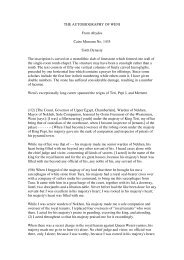
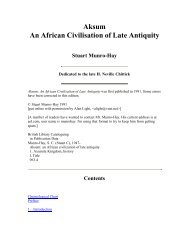

![The Negro trail blazers of California [microform] : a ... - Homestead](https://img.yumpu.com/32436613/1/174x260/the-negro-trail-blazers-of-california-microform-a-homestead.jpg?quality=85)
